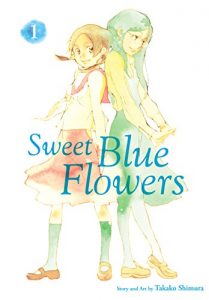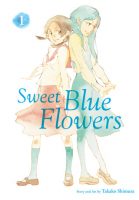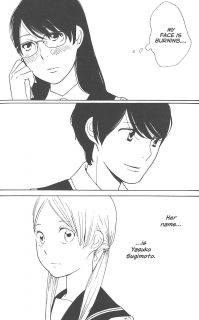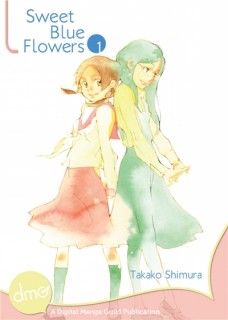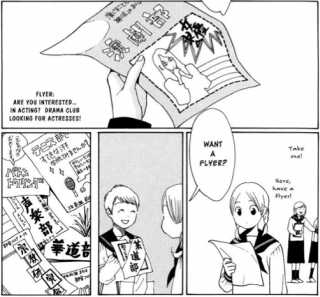Sweet Blue Flowers Volume 1 by Takako Shimura
The Viz signature line might not have quite as much hype as it did when it first launched, but it is nice to see it reserved for titles that deserve special treatment, like Sweet Blue Flowers. I had high expectations for this title based on Takako Shimura’s sensitivity and artistry in her other series Wandering Son, and I wasn’t disappointed.
Sweet Blue Flowers starts by showing old friends reconnecting. Akira Okudaira meets Fumi Manjome on her way to school, and the girls fend off train gropers together. They head off to different schools, where Fumi deals with her crippling shyness, and Akira has an easier time fitting in. Akira banters with her family about the possibility of bringing home a girlfriend from her all-girls high school. The girls’ mothers reconnect and they realize that they were kindergarten friend. Back then, Akira served as Fumi’s protector when dealing with all the trials and tribulations of childhood.
As the story unfolded in this manga, I was struck with the economy of Shimura’s storytelling, and how small moments or single panels are filled with significance. Fumi is upset about her cousin’s marriage to an extent that seems slightly beyond the norm, even for a girl who has retained some of her childhood tendency to burst into tears as an adolescent. Shimura captures the hazards of teen girls taking public transportation in a short panel sequence that focuses on a disembodied reaching hand and Akira’s shocked facial expression. Shimura is also wonderful at scattering plot points throughout the manga in a way that makes the narrative feel like it just evolves naturally from the daily lives of the characters. Fumi’s relationship with her cousin is mentioned more as the book unfolds, as Fumi becomes involved with the dashing Yasuko, who takes on the role of Heathcliff in a production of Wuthering Heights.
Akira is steadfastly supportive, and as the manga unfolds Sweet Blue Flowers’ slice of life approach to exploring friendship and romance draws the reader in. Shimura’s subtle storytelling and sensitivity towards character development makes reading this manga a pleasure. I’m disappointed with myself that I took so long to finally read this volume!
